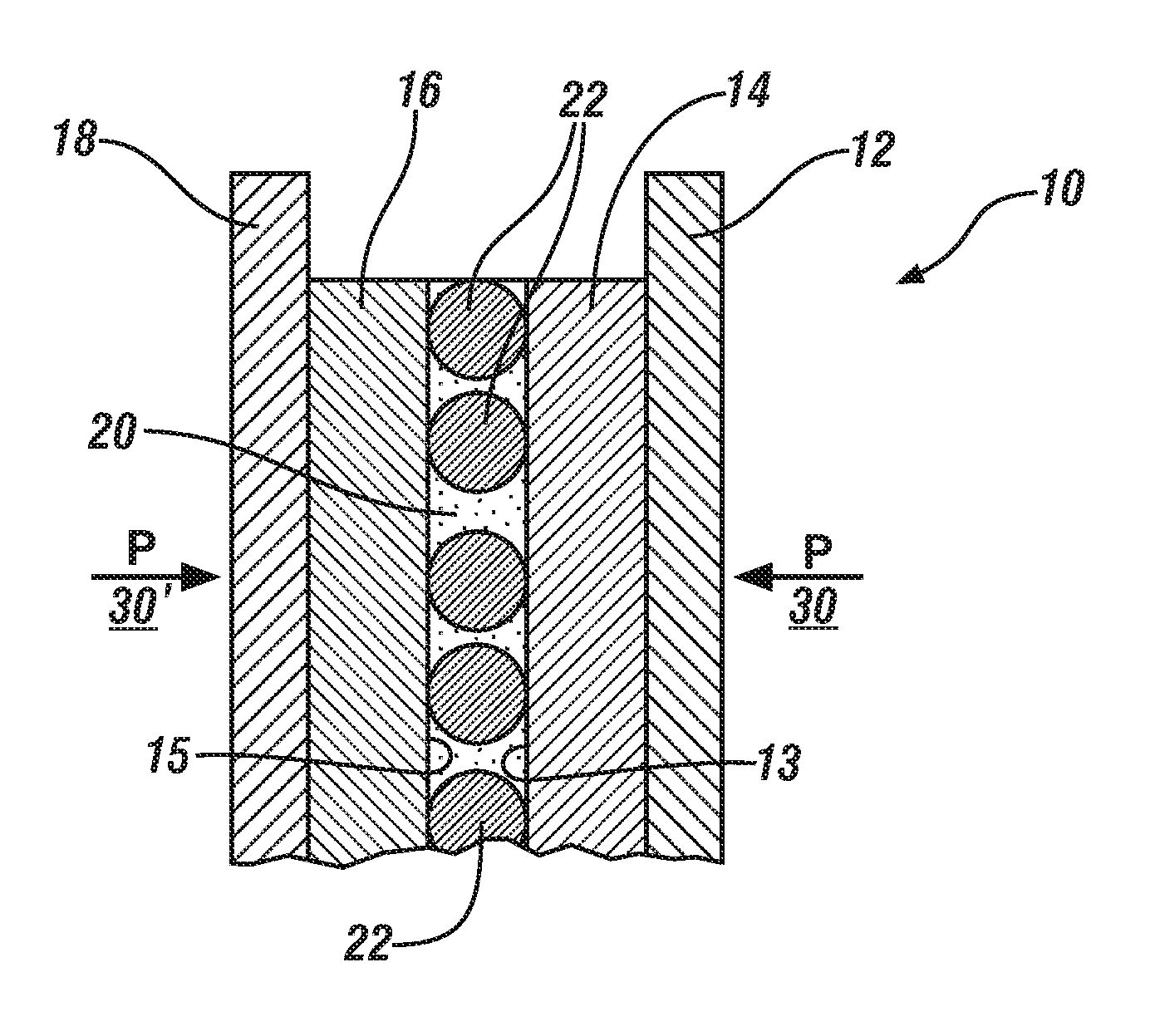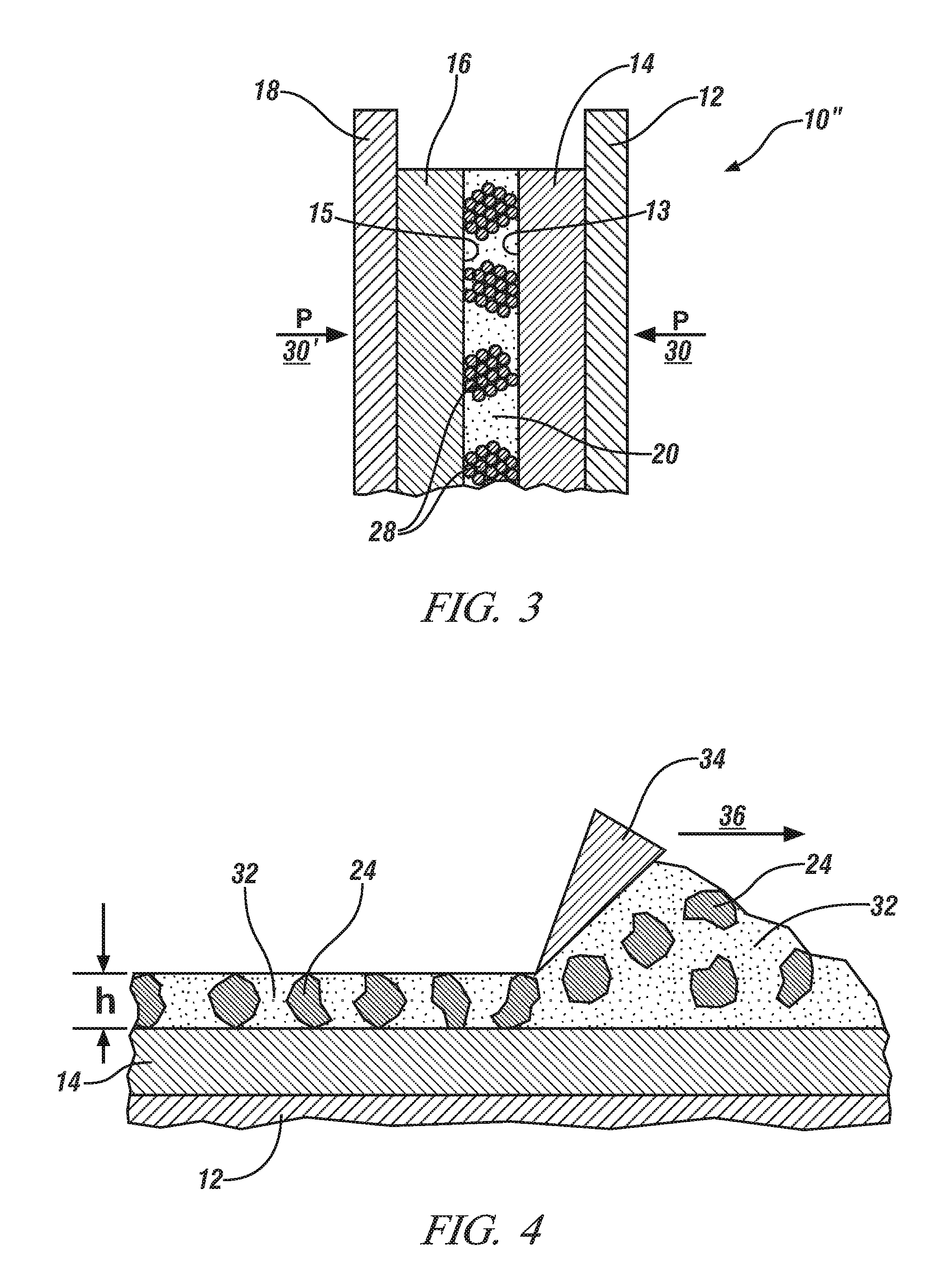Lithium ion battery with electrolyte-embedded separator particles
- Summary
- Abstract
- Description
- Claims
- Application Information
AI Technical Summary
Benefits of technology
Problems solved by technology
Method used
Image
Examples
Embodiment Construction
[0029]The following description of the embodiment(s) is merely exemplary in nature and is not intended to limit the invention, its application, or uses.
[0030]Conventional lithium-ion batteries employ a porous polymer interlayer or separator located between the anode and cathode of the cell to enforce separation of the electrodes and protect against internal short-circuits. Such separators, particularly at elevated temperatures may have limited resistance to penetration by electrically-conductive entities. Such entities may include fines or debris from battery manufacture, or lithium dendrites, lithium protrusions which form on the anode over some number of battery charge-discharge cycles and extend into the separator. If these electrically-conductive entities can span the full extent of the gap between electrodes a local short circuit will occur as these entities carry a very large current density and melt or vaporize to break the electrical connection and end the short circuit.
[003...
PUM
| Property | Measurement | Unit |
|---|---|---|
| Electrical conductivity | aaaaa | aaaaa |
| Electrical conductivity | aaaaa | aaaaa |
| Viscosity | aaaaa | aaaaa |
Abstract
Description
Claims
Application Information
 Login to View More
Login to View More - R&D
- Intellectual Property
- Life Sciences
- Materials
- Tech Scout
- Unparalleled Data Quality
- Higher Quality Content
- 60% Fewer Hallucinations
Browse by: Latest US Patents, China's latest patents, Technical Efficacy Thesaurus, Application Domain, Technology Topic, Popular Technical Reports.
© 2025 PatSnap. All rights reserved.Legal|Privacy policy|Modern Slavery Act Transparency Statement|Sitemap|About US| Contact US: help@patsnap.com



